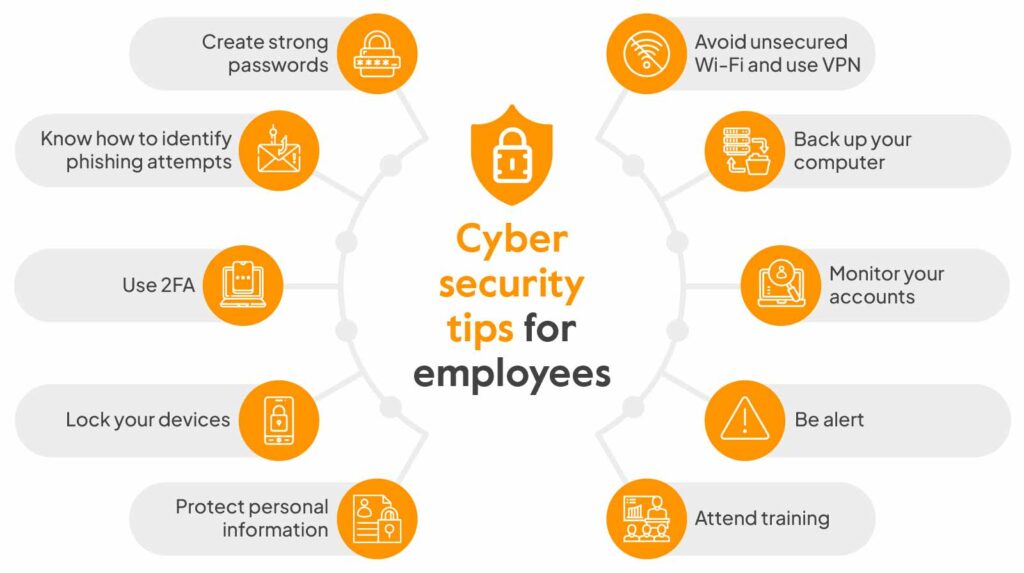How to Secure Your Website: Essential Cybersecurity Tips
Website security is a critical concern for businesses of all sizes in today’s digital landscape. Protecting your website from cyber threats not only safeguards sensitive data but also preserves customer trust and ensures uninterrupted business operations. In this article, we outline essential cybersecurity tips to help you secure your website effectively.

1. Keep Software Updated
Regularly update your website’s software, including content management systems (CMS), plugins, themes, and any other applications running on your server. Software updates often include security patches that fix vulnerabilities and strengthen your defenses against cyber attacks.
2. Use Strong Authentication and Password Policies
Enforce strong authentication methods and password policies for accessing your website’s admin panel and server. Use complex passwords that combine uppercase and lowercase letters, numbers, and special characters. Consider implementing multi-factor authentication (MFA) for an additional layer of security.
3. Implement SSL/TLS Encryption
Secure Socket Layer (SSL) or Transport Layer Security (TLS) encryption encrypts data transmitted between your website and users’ browsers, preventing it from being intercepted by malicious actors. Install an SSL/TLS certificate to ensure all communications, especially sensitive information like login credentials and payment details, are encrypted.
4. Regular Backup of Website Data
Regularly back up your website’s data, including databases, files, and configurations. Store backups securely in multiple locations, including off-site or in the cloud. In case of a security breach or website compromise, backups allow you to restore your website to a previous, uncompromised state quickly.
5. Use Web Application Firewalls (WAF)
Deploy a Web Application Firewall (WAF) to monitor and filter HTTP traffic to and from your website. A WAF can detect and block malicious traffic, such as SQL injections, cross-site scripting (XSS), and other common web application attacks. It acts as an additional layer of defense against threats targeting your web applications.
6. Secure File Uploads
Implement strict controls and validations for file uploads on your website. Ensure that only authorized file types are accepted, and scan uploaded files for malware or malicious code before making them accessible to users. Restrict direct access to uploaded files by storing them outside the web root directory.
7. Limit User Access and Permissions
Apply the principle of least privilege by granting minimal access rights necessary for users and administrators to perform their tasks. Regularly review and update user permissions to reduce the risk of unauthorized access. Implement strong access controls to protect sensitive areas of your website.
8. Monitor Website Activity and Logs
Enable logging and monitoring of website activity, including login attempts, file modifications, and database queries. Monitor access logs and audit trails for suspicious behavior or unauthorized access patterns. Use intrusion detection systems (IDS) or security information and event management (SIEM) solutions to detect anomalies and potential security incidents.
9. Educate and Train Staff
Educate your team members, especially website administrators and developers, about cybersecurity best practices and emerging threats. Provide training on identifying phishing attempts, social engineering tactics, and safe browsing habits. Foster a culture of cybersecurity awareness and encourage reporting of suspicious activities promptly.
10. Perform Regular Security Audits and Vulnerability Assessments
Conduct regular security audits and vulnerability assessments of your website and server infrastructure. Engage cybersecurity professionals or use automated tools to identify and remediate security weaknesses proactively. Address vulnerabilities promptly to reduce the risk of exploitation by cybercriminals.
Securing Your Website: A Continuous Effort
Securing your website requires ongoing vigilance and proactive measures to stay ahead of evolving cyber threats. By implementing these essential cybersecurity tips, you can significantly enhance the security posture of your website and protect it against potential risks. Prioritize website security as an integral part of your overall business strategy to safeguard sensitive data, maintain customer trust, and ensure long-term success in the digital world.